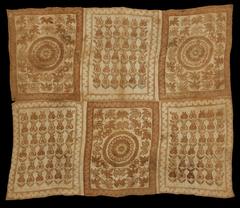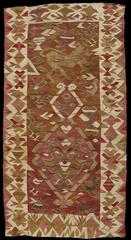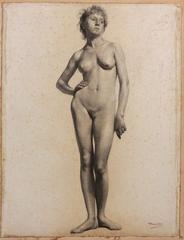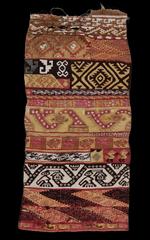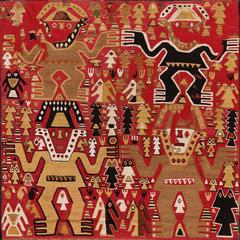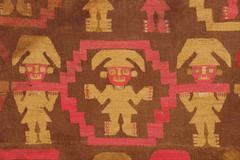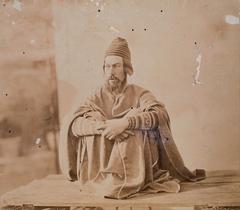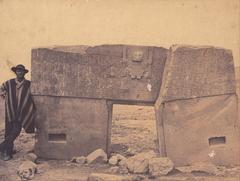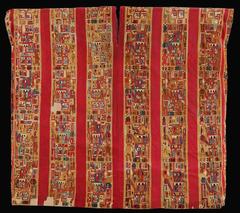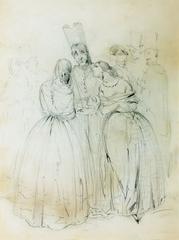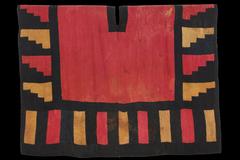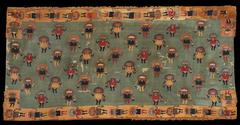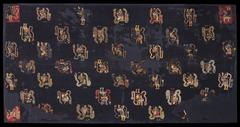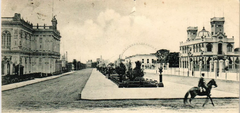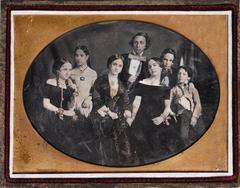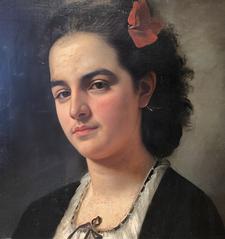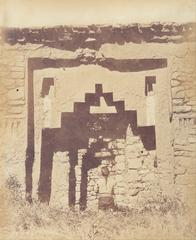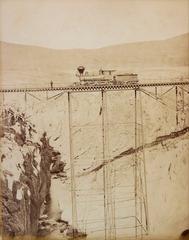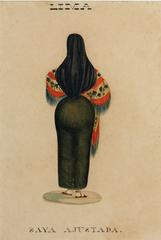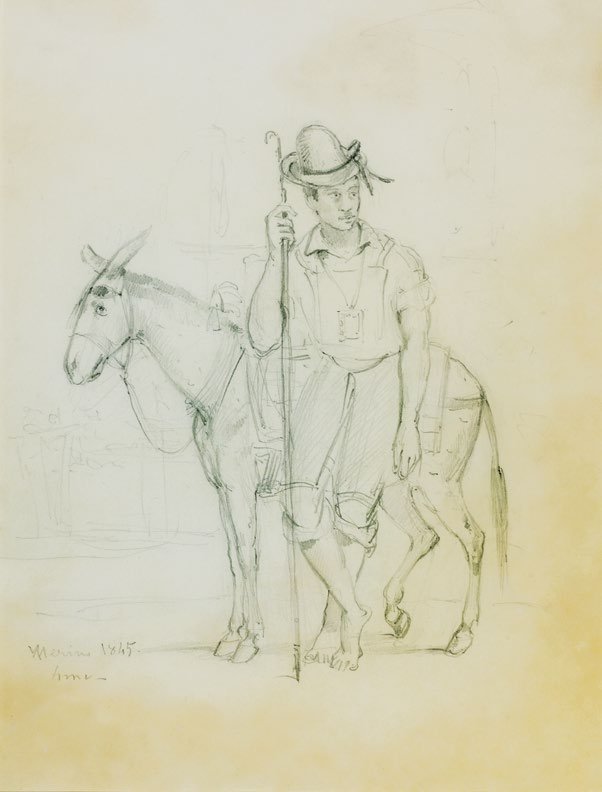
Lima Art Museum: Visiting Hours, Tickets, and Your Guide to Lima’s Historical Sites
Date: 14/06/2025
Introduction
The Museo de Arte de Lima (MALI) is a cornerstone of Peru’s artistic and cultural identity, offering visitors an immersive journey through more than 3,000 years of Peruvian creativity. Located in the historic Palacio de la Exposición within Lima’s Parque de la Exposición, MALI not only preserves a vast collection of over 17,000 works—from pre-Columbian artifacts to cutting-edge contemporary art—but also serves as a dynamic cultural hub. Founded in 1954, the museum is dedicated to celebrating Peru’s diverse heritage, making it a must-visit for art lovers, history enthusiasts, and travelers seeking to connect with the country’s vibrant culture (artsandculture.google.com; discover-peru.org).
This detailed guide covers everything you need to plan your visit, including up-to-date Lima Art Museum visiting hours, ticket information, accessibility details, guided tour options, and tips for exploring nearby historical attractions.
Table of Contents
- Introduction
- History and Cultural Significance
- The Palacio de la Exposición
- Collection Highlights
- Visiting Information
- Community Engagement and Special Exhibitions
- Nearby Attractions
- Frequently Asked Questions (FAQ)
- Conclusion and Visitor Resources
- References
History and Cultural Significance
MALI was envisioned in 1954 by a group of Peruvian intellectuals and entrepreneurs determined to preserve and promote the nation’s artistic heritage. The Municipality of Lima provided the Palacio de la Exposición—a striking 19th-century building designed by Antonio Leonardi and influenced by Gustave Eiffel—as the museum’s home (discover-peru.org). Following a period of restoration with international support, the museum officially opened its doors in 1961 and has since become the largest art museum in Peru, recognized for its comprehensive collections and vital role in cultural education (artsandculture.google.com).
The Palacio de la Exposición
Built in 1871, the Palacio de la Exposición was originally designed to host Peru’s first public exhibition of art, science, and industry. Over the years, the building has served many roles, including as a hospital and government office, before being restored and repurposed as MALI. In 1972, it was declared Cultural Patrimony of the Nation, cementing its status as both an architectural and cultural treasure (discover-peru.org).
Collection Highlights
Pre-Columbian Art
MALI’s pre-Columbian collection features ceramics, textiles, metalwork, and ritual objects from ancient cultures such as the Chavín, Paracas, Nazca, Moche, Wari, and Inca. Highlights include Paracas textiles renowned for their intricate designs, Moche portrait vessels, and gold and silver ornaments from the Lambayeque and Chimú (Lonely Planet).
Colonial Art
The museum’s colonial galleries showcase the fusion of European and indigenous styles, with emphasis on Cusco School paintings, gilded retablos, polychrome sculptures, and religious silverwork dating from the 16th to 18th centuries (WhichMuseum).
Republican and 19th Century Art
This collection reflects Peru’s evolution after independence, featuring neoclassical paintings, early photography, and decorative arts that illustrate political and social shifts, as well as portraits of national leaders (Lonely Planet).
Modern and Contemporary Art
Showcasing Peruvian artistic innovation from the 20th century to the present, these galleries include works by indigenismo pioneer José Sabogal, abstract painter Fernando de Szyszlo, and contemporary figures like Teresa Burga and Mario Testino. Rotating exhibitions highlight new voices and current trends (Lonely Planet).
Visiting Information
Hours and Tickets
- Opening Hours: Tuesday to Sunday, 10:00 AM – 7:00 PM (last admission at 6:30 PM). Closed on Mondays and select holidays.
- Ticket Prices: General admission is 15 PEN; students and seniors pay 7 PEN; free entry on Sundays and select cultural events. Tickets can be purchased onsite or online for convenience.
- Guided Tours: Bilingual tours in Spanish and English are available Tuesday to Saturday at set times for a small additional fee (Tierras Vivas).
Accessibility and Facilities
- Physical Accessibility: Ramps, elevators, and accessible restrooms are available.
- Information Desk: Multilingual staff and signage in Spanish and English.
- Museum Shop: Offers art books, exhibition catalogs, crafts, and souvenirs.
- Café: Serves coffee, pastries, and light meals.
- Wi-Fi: Complimentary internet in public areas.
- Cloakroom: Secure storage for bags and coats.
Guided Tours and Educational Programs
MALI provides daily guided tours, educational workshops, and special courses in visual arts, dance, music, and more. There are tailored offerings for school groups and university students, and the museum is known for pioneering inclusion of Quechua language signage (Inca Trail Machu).
Travel Tips
- Buy tickets in advance online to avoid lines.
- Allow at least two hours for a comprehensive visit.
- Non-flash photography is allowed in most areas; restrictions may apply to temporary exhibitions.
- Arrive early, especially on weekends and free entry days, to avoid crowds.
Community Engagement and Special Exhibitions
MALI is an active participant in international collaborations, such as the Google Art Project, which provides virtual access to over 10,000 works (Inca Trail Machu). The museum regularly hosts temporary exhibitions—spotlighting ancient cultures, contemporary artists, and public art projects that enliven Lima’s historic plazas and foster community connection (Enigma Peru).
Nearby Attractions
Located in the heart of Lima, MALI is surrounded by notable cultural sites:
- Parque de la Exposición: Gardens, fountains, and monuments.
- Museum of Italian Art: Directly across the street.
- Plaza Mayor and Lima Cathedral: Both are within a short drive or public transport ride (FilminPeru).
Public transport, including Lima’s Metropolitano bus system, and taxis provide convenient access to the museum and surrounding attractions.
Frequently Asked Questions (FAQ)
Q: What are the Lima Art Museum visiting hours?
A: Tuesday to Sunday, 10:00 AM to 7:00 PM; closed Mondays. Check the official website for special hours and holidays.
Q: How much are tickets?
A: General admission is 15 PEN; students and seniors 7 PEN; free on Sundays and some events.
Q: Is the museum accessible?
A: Yes, with ramps, elevators, and accessible restrooms.
Q: Are guided tours available?
A: Yes, in Spanish and English, with advance booking recommended for groups.
Q: Can I see the collection online?
A: Yes, over 10,000 works are accessible via the Google Art Project.
Q: Are there COVID-19 safety measures?
A: Safety protocols may include sanitizing stations, mask requirements, and capacity limits as per local regulations.
Conclusion and Visitor Resources
MALI stands as a testament to Peru’s artistic brilliance and cultural resilience, making it a must-see destination for anyone exploring Lima. Its comprehensive collections, educational initiatives, and accessible facilities offer something for every visitor. To stay informed about upcoming exhibitions, special events, and practical information, consult the official MALI website and follow the museum’s social media channels.
For an enriched experience, consider using the Audiala app for self-guided tours and exclusive content. Explore related posts on Lima’s historical sites and immerse yourself in the city’s vibrant cultural scene.
References
- Museo de Arte de Lima: Visiting Hours, Tickets, and a Journey Through Peru’s Artistic Heritage, 2025, Arts & Culture Google
- Visiting MALI: Hours, Tickets, and Cultural Highlights of Lima’s Premier Art Museum, 2025, Inca Trail Machu
- Lima Art Museum (MALI) Guide: Visiting Hours, Tickets, and Collections Overview, 2025, Lonely Planet
- Visitor Experience: Facilities, Services, and Practical Information, 2025, FilminPeru
- Visiting MALI, 2025, Lonely Planet
- Lima Art Museum - A Long History of Peruvian Art, 2025, Enigma Peru

